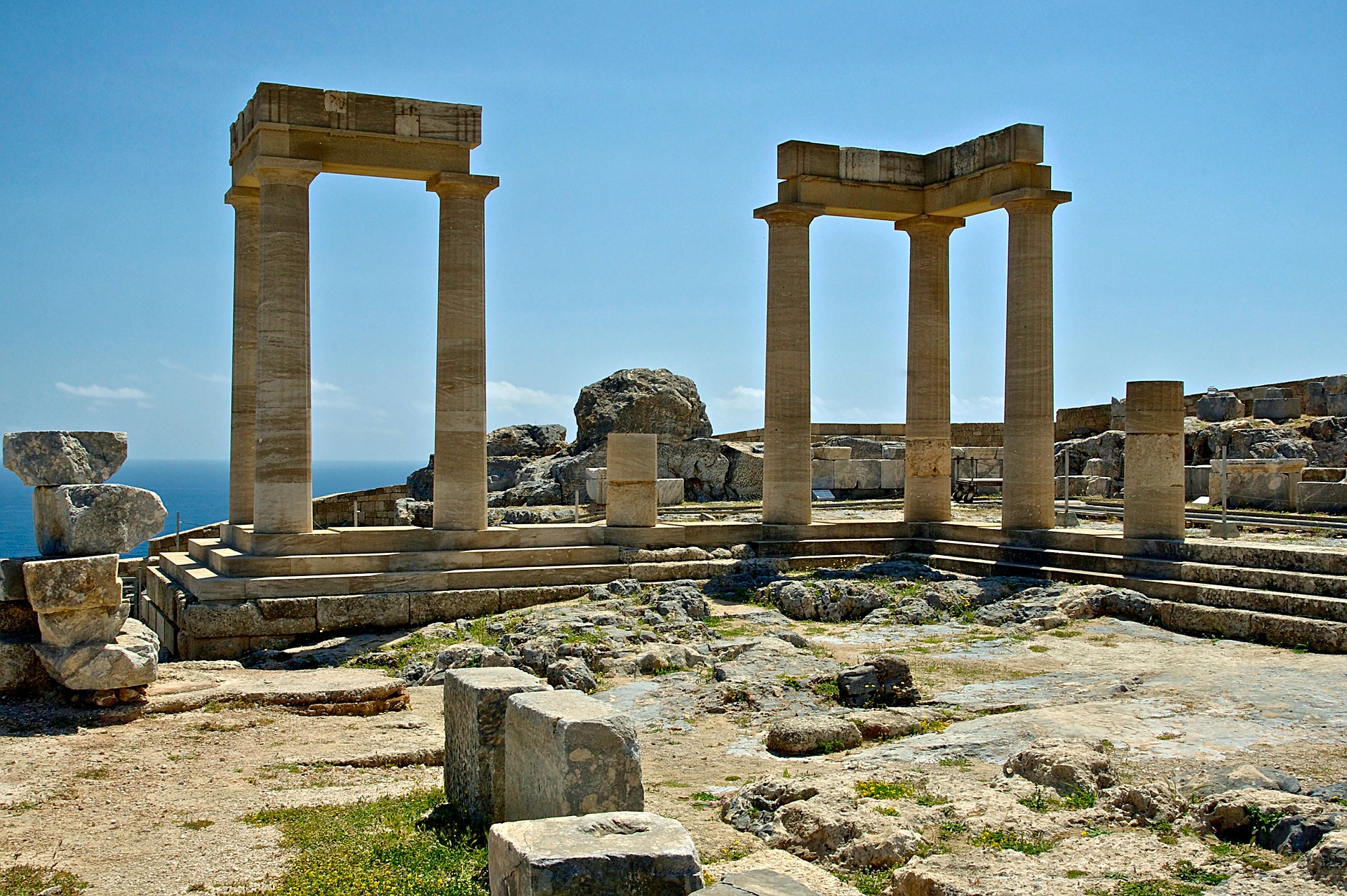Home » Programs » Full Degree Programs » Graduate » MA in Classical Studies (Research Track)


Because of the Excellent Academic Level and Unique Atmosphere
The Department of Classical Studies at Bar-Ilan University is renowned for its esteemed faculty members, some of whom are internationally acclaimed researchers. Our courses regularly receive the highest scores in teaching reviews and educational surveys.
All of our courses are held in small groups, so that every student receive the professors’ attention and personal treatment, and so that good relationships are created between all the students and faculty members, cultivating a great learning atmosphere.
Because of Our Diverse Study Tracks
Bar-Ilan’s Department of Classical Studiesoffers various study tracks for B.A., M.A. and Ph.D. degrees in Classical Studies. Specialties offered in the B.A. track are the Greek World (including ancient Greek language studies); the Roman World (including studies of Latin); and the Classical Cultures World, which doesn’t require the acquisition of ancient languages.
Because of the Multitude of Conferences and Seminars
As part of the study curriculum, the Department of Classical Studies regularly holds fascinating conferences and seminars on such subjects as ancient literature, philology, history, mythology, art, philosophy and showcasing the ancient world in popular culture.
Because of the Fascinating Course Offerings
In addition to “Classical” subject matters, our Department also offers numerous interesting courses such as mythology, biography, political philosophy, women in the ancient world, the relations between Israel, Rome and Greek, and more. We examine a wide variety of cultures and peoples, from 1,500 BC to 500 AD, and from the British Isles in the West to the Middle and even Far East.
Because We Provide the Modern Perspective on the Ancient World
Some of the courses at the Department of Classical Studies focus on the connection between the ancient world and modern times, including the exploration of timeless cultural influences on modern media outlets such as television and cinema. Additionally, we enable students to experience first-hand the culture of the ancient world through the staging of ancient dramatic productions.
Prof. Lisa Maurice explains why you should study with us.

Admission to the MA is conditional on the student spending a required period on campus, this will be arranged with the department head.

Available in both Track A Research Track (with thesis) and Track B Non-Research Track (coursework-based).
No prior experience in classical studies is needed.
Students who have studied, or begin to study, Greek or Latin during the MA may choose to write a thesis.
Track A – Research Track
Credit Requirements
12 annual credits (24 semester credits), including two seminars and courses that involve reading classical texts in their original languages.
Students in this track may be eligible to continue on to PhD studies, provided they demonstrate proficiency in both Greek and Latin.
Thesis & Final Exam
Track B: Non-Research Track
Credit Requirements
18 annual credits (36 semester credits), including:
Whenever possible, coursework will be tailored specifically for MA students.
Final Exam
The exam is based on a reading list assigned by the department head.
Additional Requirements
Students who did not earn their BA at Bar-Ilan University must also complete 8 semester-based credits in Basic Jewish Studies or General Courses.
You can explore the General Courses catalogue here.
The Department of Classical Studies’ faculty members who are currently available to supervise dissertations are scholars of international standing, covering a range of fields:
Prof. Lisa Maurice
Research specializations: Classical reception (particularly the reception of the ancient world in children’s culture and in modern popular culture), ancient comedy, ancient drama, Plautus, metatheatricality.
Prof. Daniela Dueck
Research specializations: Strabo, geographical conceptions in ancient Greece and Rome, ancient geographic narrative, cultural history of ancient Greece and Rome (especially customs and ethnic identities).
Prof. Gabriel Danzig
Research specializations: Ancient philosophy, Socratic studies, Plato, Xenophon, Greek political thought, Jewish thought.
Research specializations: Greek and Latin language, literature and culture, Modern Greek language and culture, Greek epic poetry and tragedy, Classical mythology & religions in antiquity, Women & gender in antiquity, Mobility and space, Classical Reception Studies, Text and image (especially Attic vases), Greek social history
PhD in Classical Studies
Admission Requirements
Please note: Admission is conditional on spending a set amount of time at Bar-Ilan University, which will be arranged in coordination with the department head.
Areas of Specialization
Each PhD track is individually designed, based on your research focus and in collaboration with your advisor and the department head.
The program includes language courses, any additional coursework you may need, and of course, your dissertation.
Depending on your research direction, you might also be asked to study another modern language.
Credit Requirements
You’ll need to complete 12 semester-based credits within the department, including required language courses.
If you didn’t complete either of your previous degrees at Bar-Ilan, you’ll also need to take 8 semester-based credits in Basic Jewish Studies or General Courses before completing your PhD.
You can browse the General Courses catalog here.

International School
Bar-Ilan University
Ramat-Gan, Israel 5290002
Tel: +972- 3-738-4245
Email for further information
[email protected]
Leave your details and we’ll get back to you soon
Explore a range of undergraduate degrees in English, including Political Science, Communication, and Humanities. We also offer 16 diverse graduate programs and a brand-new Cyber Security & Data Protection certificate – all in English!

If you find an error in content or missing information – please update us. In any case, the binding information appears on the website of the Council for Higher Education.
We firmly believe that the internet should be available and accessible to anyone, and are committed to providing a website that is accessible to the widest possible audience, regardless of circumstance and ability.
To fulfill this, we aim to adhere as strictly as possible to the World Wide Web Consortium’s (W3C) Web Content Accessibility Guidelines 2.1 (WCAG 2.1) at the AA level. These guidelines explain how to make web content accessible to people with a wide array of disabilities. Complying with those guidelines helps us ensure that the website is accessible to all people: blind people, people with motor impairments, visual impairment, cognitive disabilities, and more.
This website utilizes various technologies that are meant to make it as accessible as possible at all times. We utilize an accessibility interface that allows persons with specific disabilities to adjust the website’s UI (user interface) and design it to their personal needs.
Additionally, the website utilizes an AI-based application that runs in the background and optimizes its accessibility level constantly. This application remediates the website’s HTML, adapts Its functionality and behavior for screen-readers used by the blind users, and for keyboard functions used by individuals with motor impairments.
If you’ve found a malfunction or have ideas for improvement, we’ll be happy to hear from you. You can reach out to the website’s operators by using the following email
Our website implements the ARIA attributes (Accessible Rich Internet Applications) technique, alongside various different behavioral changes, to ensure blind users visiting with screen-readers are able to read, comprehend, and enjoy the website’s functions. As soon as a user with a screen-reader enters your site, they immediately receive a prompt to enter the Screen-Reader Profile so they can browse and operate your site effectively. Here’s how our website covers some of the most important screen-reader requirements, alongside console screenshots of code examples:
Screen-reader optimization: we run a background process that learns the website’s components from top to bottom, to ensure ongoing compliance even when updating the website. In this process, we provide screen-readers with meaningful data using the ARIA set of attributes. For example, we provide accurate form labels; descriptions for actionable icons (social media icons, search icons, cart icons, etc.); validation guidance for form inputs; element roles such as buttons, menus, modal dialogues (popups), and others. Additionally, the background process scans all of the website’s images and provides an accurate and meaningful image-object-recognition-based description as an ALT (alternate text) tag for images that are not described. It will also extract texts that are embedded within the image, using an OCR (optical character recognition) technology. To turn on screen-reader adjustments at any time, users need only to press the Alt+1 keyboard combination. Screen-reader users also get automatic announcements to turn the Screen-reader mode on as soon as they enter the website.
These adjustments are compatible with all popular screen readers, including JAWS and NVDA.
Keyboard navigation optimization: The background process also adjusts the website’s HTML, and adds various behaviors using JavaScript code to make the website operable by the keyboard. This includes the ability to navigate the website using the Tab and Shift+Tab keys, operate dropdowns with the arrow keys, close them with Esc, trigger buttons and links using the Enter key, navigate between radio and checkbox elements using the arrow keys, and fill them in with the Spacebar or Enter key.Additionally, keyboard users will find quick-navigation and content-skip menus, available at any time by clicking Alt+1, or as the first elements of the site while navigating with the keyboard. The background process also handles triggered popups by moving the keyboard focus towards them as soon as they appear, and not allow the focus drift outside of it.
Users can also use shortcuts such as “M” (menus), “H” (headings), “F” (forms), “B” (buttons), and “G” (graphics) to jump to specific elements.
We aim to support the widest array of browsers and assistive technologies as possible, so our users can choose the best fitting tools for them, with as few limitations as possible. Therefore, we have worked very hard to be able to support all major systems that comprise over 95% of the user market share including Google Chrome, Mozilla Firefox, Apple Safari, Opera and Microsoft Edge, JAWS and NVDA (screen readers), both for Windows and for MAC users.
Despite our very best efforts to allow anybody to adjust the website to their needs, there may still be pages or sections that are not fully accessible, are in the process of becoming accessible, or are lacking an adequate technological solution to make them accessible. Still, we are continually improving our accessibility, adding, updating and improving its options and features, and developing and adopting new technologies. All this is meant to reach the optimal level of accessibility, following technological advancements. For any assistance, please reach out to